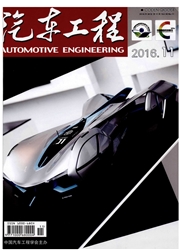

 中文摘要:
中文摘要:
采用单向拉伸实验对汽车用TRIP600、DP600、DQSK、IF、BH300和DDQ钢板的应变硬化指数(n值)进行测定,以揭示n值随塑性应变的变化规律。通过归纳的方法建立了n值经验模型,并基于该模型进行汽车前纵梁的回弹仿真。结果表明:这6种钢板的n值均随塑性应变的增加先增大后减小;不同钢材在初始硬化水平、硬化速率和高硬化水平持续时间方面有不同表现;考虑n值随塑性应变的变化可在不同程度上提高汽车前纵梁回弹仿真的精度,最大可达25%。
 英文摘要:
英文摘要:
The strain hardening indexes(n-value) of TRIP600,DP600,DQSK,IF,BH300 and DDQ steels for motor vehicles are measured by uniaxial tensile tests to reveal the rule of n-value varying with plastic strain,and an empirical model for n-value is created,with which a spring-back simulation on a front side rail is conducted. The results indicate that with the increase of plastic strain,the n-value of all six steel sheets rises first and then falls. Different steels have different behaviors in respects of hardening level,the rate of strain hardening and the duration of high hardening level. The consideration of n-value varying with plastic strain can,to different extents,enhance the accuracy of spring-back simulation for front side rail,up to 25% at most.
 同期刊论文项目
同期刊论文项目
 同项目期刊论文
同项目期刊论文
 期刊信息
期刊信息
